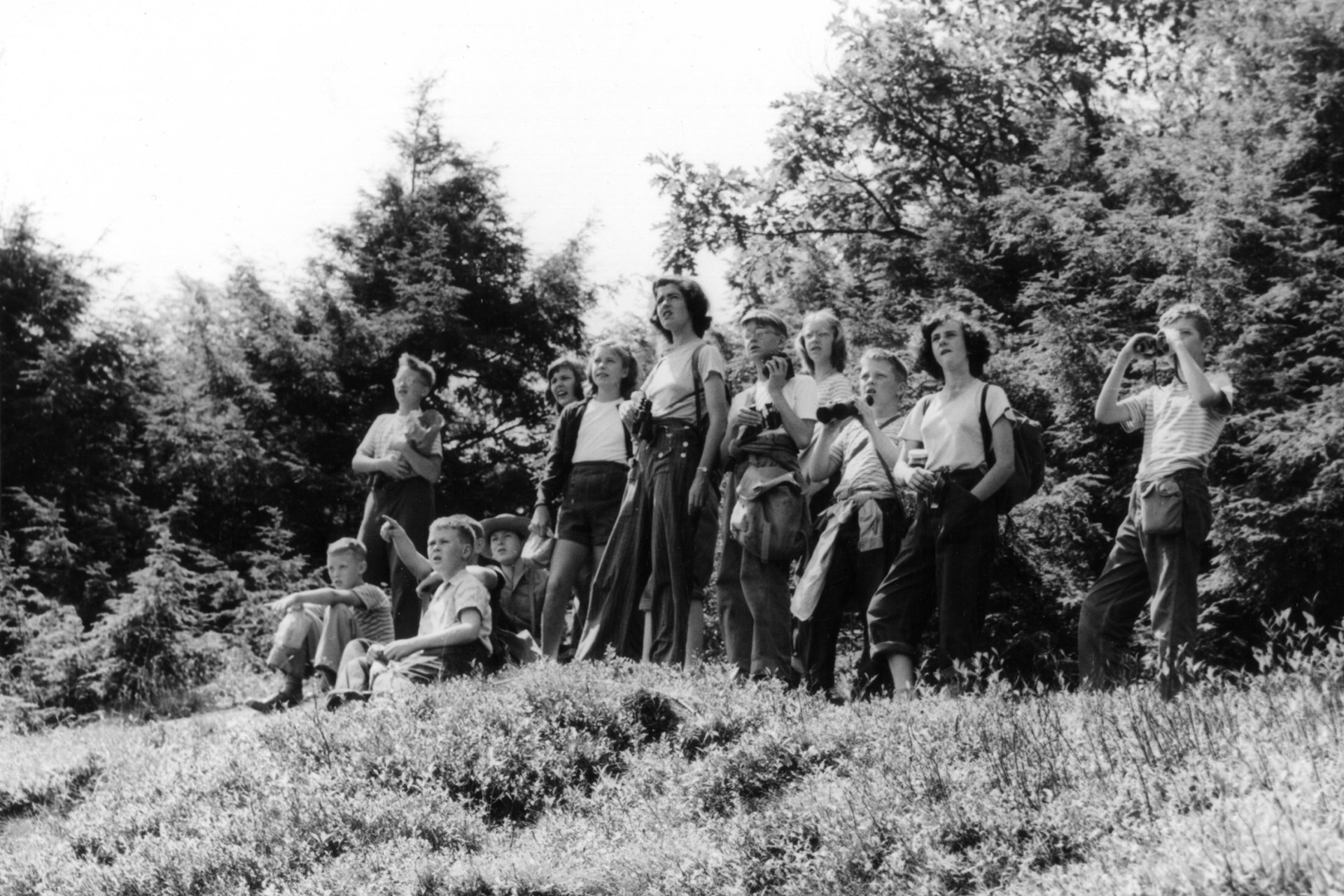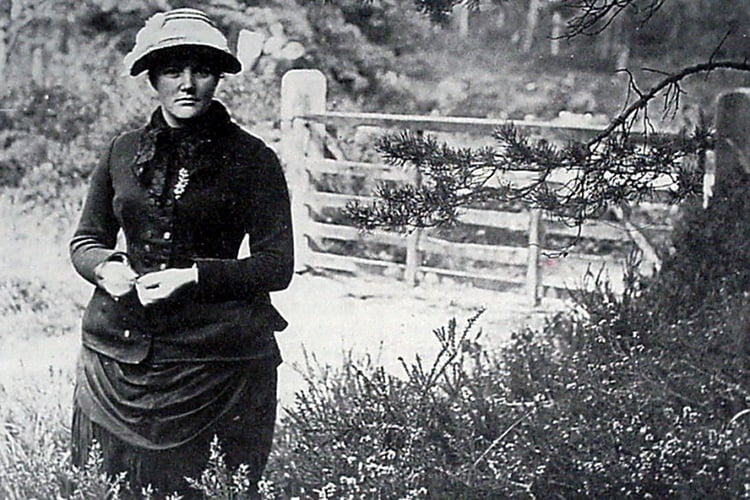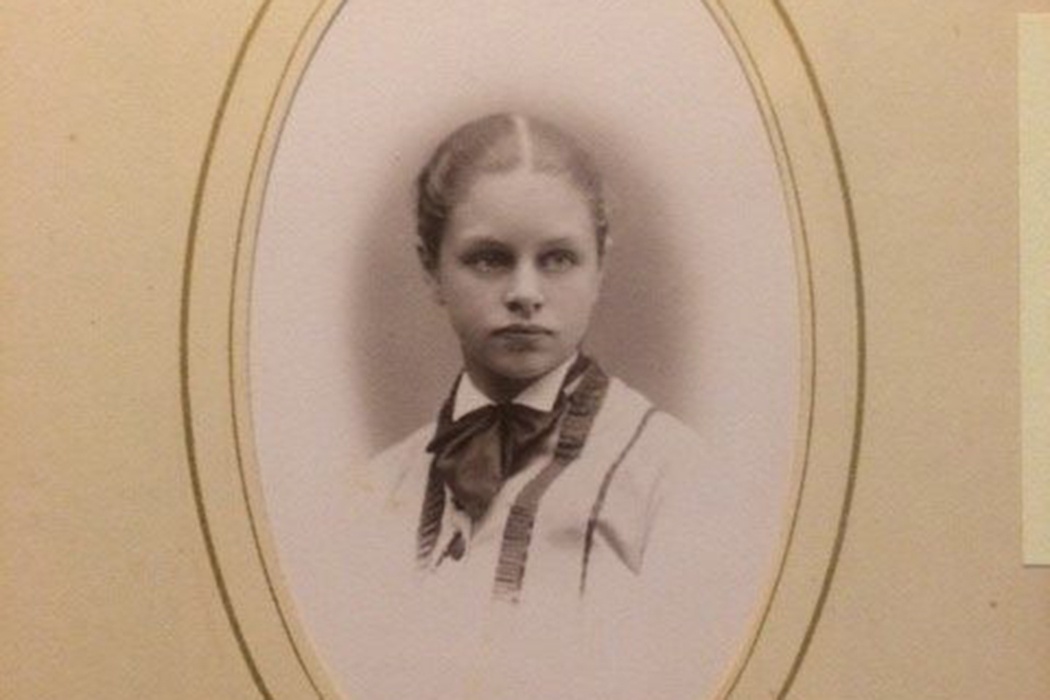History of Mass Audubon
Mass Audubon was founded in 1896 by Harriet Lawrence Hemenway and Minna B. Hall, who persuaded ladies of fashion to forgo the cruelly harvested plumage that adorned their hats.
Two Women Who Started a Movement
In the late 1800s, it was fashionable for women to wear hats adorned with feathers and dead birds. When Boston-based Harriet Hemenway read an article that described in graphic detail how these beautiful birds were hunted and killed, or stripped of their feathers, she knew she had to do something.
She shared what she learned with her cousin, Minna Hall. “We had heard that Snowy Egrets in the Florida Everglades were being exterminated by plume hunters who shot the old birds, leaving the young to starve on the nests,” the two said, as noted in Massachusetts Audubon Society: The First Sixty Years by Richard K. Walton and William E. Davis, Jr.
Over tea on a cold January day in 1896, the two launched a campaign to convince other women to forgo the trend of wearing birds for fashion, and in doing so, take on the multinational millinery industry. They set out on a series of tea parties, convincing other women to join their cause.
Then, they brought together some of these prominent women with renowned ornithologists to launch the Massachusetts Audubon Society to “further the protection of birds” and “to discourage the buying and wearing of the feathers of wild birds.” Through leaflets, lectures, and calendars, they attracted more and more members to get involved.
Hall served on the organization’s Board of Directors for more than 50 years, devoting much of her energy to producing the publications and a traveling library. Hemenway first served as a Vice President and provided critical funding for projects that helped the organization build its reputation, before joining its Board, where she served for 16 years. They both remained dedicated to the organization, birds, and nature until they passed, Hall at the age of 92 and Hemenway at 103.
Thanks to Hemenway and Hall, the longest independent running Audubon Society was formed, critical bird legislation was eventually passed (the very legislation under threat today), people across the Commonwealth became fascinated with birds, and Mass Audubon’s land protection program was born.
Additional Reading
Timeline
Mass Audubon Presidents
Noted ed ornithologist William Brewster was enlisted as the Massachusetts Audubon Society’s first president (1896-1913) to advance legislation to restrict the killing of birds and sale of their plumage.
Brewster passed the torch to Edward Howe Forbush (president from 1914-1925), who opened our first wildlife sanctuary—Moose Hill in Sharon—in 1916 and expanded the organization’s influence from a regional to global scale, resulting in measures for international protection of birds.
The third president (1925-1935), Judge Robert Walcott, promoted education—introducing natural history programs for schools and day camps.
Carl Buchheister was at the helm from 1936 to 1939 when the Federation of Bird Clubs in New England was brought into the Mass Audubon fold.
He was followed by C. Russell Mason, whose tenure (1939-1959) included formation of the Natural Science Workshop to train teachers and youth leaders in natural history education and the founding of residential camp Wildwood.
Next came Allen H. Morgan who, in the 1960s, brought Mass Audubon to the forefront of the nascent environmental movement. Morgan tackled causes like pesticide regulation while never losing sight of our origins in bird conservation. Major accomplishments during his tenure (1959-1980) were passage of Massachusetts wetlands protection legislation in the 1960s and 1970s—the first state wetlands laws in the nation—and the milestone in 1976 of 10,000 acres of open space acquired.
Under the leadership (1980-1999) of Gerard A. Bertrand, Mass Audubon spearheaded passage of critical land and water protection legislation, while also maintaining focus on local and international bird protection, launching the Coastal Waterbird Program in 1987 and beginning cooperative work with the Belize Audubon Society in 1984, then forming Programme for Belize in 1988. Bertrand drove expansion of our sanctuary system to ensure a Mass Audubon presence close by for every citizen of the state.
Approaching the year 2000, Mass Audubon came full circle by choosing Laura Johnson as president, a century after our Founding Mothers began their work. Under Johnson’s leadership (1999-2012), Mass Audubon opened 16 more wildlife sanctuaries across the state, pioneered a comprehensive program of sustainable practices at our properties, and strengthened our commitment to reaching new audiences and urban environmental education.
Following Johnson, Henry George Tepper (2012-2015), an internationally recognized conservationist with significant experience in land protection and advocacy, was elected as President. Among his many accomplishments was leading the effort to create an exciting and impactful Strategic Plan to guide Mass Audubon over the next five years.
The Board of Directors next appointed Gary Clayton as President of Mass Audubon (2015-2020). Prior to this role, Clayton served as the organization's Vice President of Conservation Programs. He was instrumental in shaping Mass Audubon as a strong conservation leader. This included strategically expanding our land conservation efforts and the stewardship of our statewide wildlife sanctuary system; growing our presence in urban centers throughout the Commonwealth; increasing access to all, regardless of physical and cognitive abilities or socioeconomic status; continuing efforts to instill a sense of wonder of the natural world in the next generation through our school and group programs; advocating forcefully on behalf of the environment; and leading by example in the face of sprawling development and a changing climate.
David J. O'Neill (2020-present) took on the role of President after Clayton's retirement in May 2020. O'Neill has dedicated his professional career to conservation. Previous roles include Chief Conservation Officer at National Audubon Society, Vice President at the National Fish and Wildlife Foundation, Vice President at Cherokee Investment Partners, Executive Director of the Chesapeake Bay Trust, and Director of Land Use Policy and Outreach for the Urban Land Institute. As President of Mass Audubon, David is focusing his efforts on expanding our work on climate change; tackling equity, diversity, and inclusion issues including our reach to new audiences; protecting habitat for birds and other wildlife; and widening our lens to affect the health and resilience of Massachusetts, New England, and beyond.





